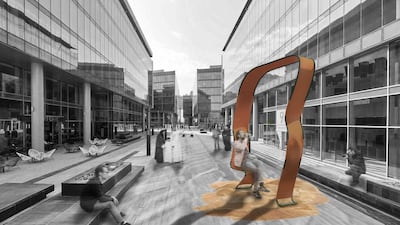
























Dubai Design Week 2020: 15 installations that reflect the way we live now
Dining pods, monoliths, pathways less taken and socially distanced seating find cultural food for thought at this year's design festival
Gemma White
November 08, 2020
- Listen in English
- Listen in Arabic